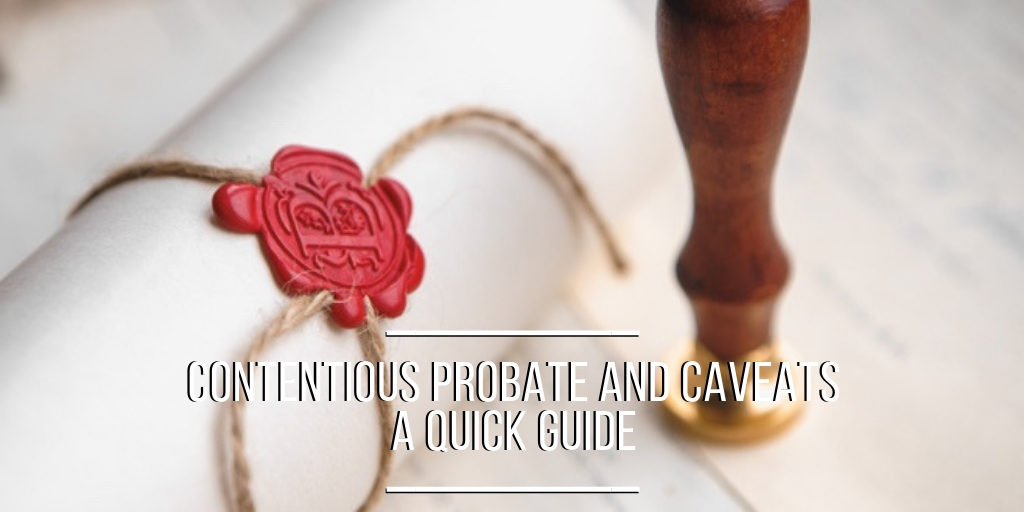
What is contentious probate?
Contentious probate, also known as contested probate refers to any dispute that may arise that relates to the administration of a persons estate upon their death. This could be a dispute over the value of the assets left by the deceased, the interpretation of their will or dealing with difficult executors or beneficiaries that may be feuding over who has the rights to receive what.
Many solicitors offer contentious probate services to ensure these matters can be settled promptly and legally, but it’s important to be aware that you may need to act fast and employ these services in order to protect the estate.
What does a caveat mean?
A caveat can be issued by someone who has a dispute in a probate matter, which effectively stops a Grant of Probate form being issued and puts the administration of the estate on hold for a minimum of 6 months (although it can be renewed indefinitely if the concerns are valid). Notice does not need to be given to the executors or beneficiaries of the will, so it can come as a complete surprise to find that a caveat has been issued.
Caveats are usually issued when someone has a genuine concern about the validity of the will. This creates time for parties to work out whether there are valid grounds to oppose someone’s application for probate and to bring estate matters before the Court.
What are some valid reasons for a caveat?
It is up to the person entering the caveat to prove why they believe the will may not be valid. There are numerous reasons why people may believe this, but the following reasons are the most common:
- They believe that the testator of the will didn’t understand what they were signing and didn’t have “sound mind, memory and understanding”. In legal terms, this is known as ‘lack of testamentary capacity’ and the testator must understand the nature of the act and its effects, comprehend the claims, understand the extent of property and assets that they are disposing of and not be affected by any “disorder of the mind” such as Alzheimer’s.
- It is believed that the testator signed the will under influence or coercion by another party. For example, a sick person may have been verbally coerced into changing a will and, due to their condition, they were unable to do anything about it.
- It is believed that the testator didn’t have knowledge or approval of the will. In this case, the Court must be satisfied that the testator completely understood and approved of the contents of the will.
- It doesn’t comply with section 9 of the Wills Act 1837. A number of conditions must be met for the will to be valid.
- It is suspected that the will may be a forgery or fraudulent.
Can a caveat be removed?
The Personal Representative of the will must lodge a ‘Warning’ at the Probate Registry. This is then served on the person who entered the caveat, after which they have 14 days to enter an “Appearance” at the Probate Registry. If this isn’t done, the caveat will be removed once an affidavit of service of the Warning is lodged with the Probate Registry.
If any Appearance is lodged then the caveat will remain in place until the issues are resolved or it’s removed by consent by the parties involved or by a Court Order. In most cases, the caveat is removed once the issues are resolved and a way forward is agreed.
